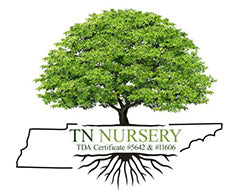





About Best Selling Plants
Best selling plants include the milkweed, scientifically known as Asclepias. Milkweed is a fascinating and crucial plant in botany and ecology. It is a pivotal host plant for monarch butterflies, making it a vital component in their life cycle. Milkweed is native to North America and can be found in various regions, from meadows to roadside ditches.
One of the most remarkable features of milkweed is its intricate and colorful flowers. The blossoms, which range from white to pink to orange, attract pollinators like bees and butterflies and provide nectar for these insects. Furthermore, milkweed leaves are the sole food source for monarch butterfly caterpillars. The plant's toxins, absorbed by the caterpillars, serve as a defense mechanism for the butterflies later in their lives.
Virginia Bluebell: Virginia Bluebell, or Mertensia virginica, is a charming native wildflower known for its stunning blue, bell-shaped flowers. These delicate blooms typically appear in the early spring, creating a captivating display in woodlands and along riverbanks. Virginia Bluebells are highly valued for their aesthetic appeal and role in supporting pollinators like bees and butterflies.
These plants are essential to native plant gardens and natural landscapes because they attract beneficial insects and add vibrant color to the early spring landscape. Moreover, they are an excellent choice for gardeners looking to create a dynamic and wildlife-friendly environment.
Best Selling Plants Ajuga Reptans
Ajuga Reptans: Ajuga Reptans, commonly known as Bugleweed, is a versatile ground cover plant. Its low-growing, mat-like habit makes it ideal for filling garden gaps and suppressing weeds. Ajuga's distinctive foliage, which varies in color from deep burgundy to lush green, provides year-round interest.
Besides its aesthetic appeal, Ajuga Reptans produces spikes of small, tubular flowers in shades of blue, purple, or white. These blooms attract bees and other pollinators, contributing to garden biodiversity. Ajuga also boasts some medicinal properties and has been used traditionally in herbal medicine.
Tree Nursery Co Offering These Plants: Tree Nursery Co recognizes the importance of these native plants in promoting biodiversity, supporting pollinators, and enhancing the beauty of gardens and landscapes. As a responsible supplier of native plants, we offer Milkweed, Virginia Bluebell, and Ajuga Reptans to gardeners, landscapers, and conservationists.
Our commitment to sustainable horticulture ensures that these plants are grown and sourced responsibly, without harm to their natural habitats. By providing these native plants, we aim to encourage cultivating wildlife-friendly gardens and restoring local ecosystems.
In conclusion, our Best Selling Plants include Milkweed, Virginia Bluebell, and Ajuga Reptans, which are invaluable additions to any garden or natural setting, offering beauty, ecological significance, and pollinator support.
Tree Nursery Co. is dedicated to making these plants accessible to those who wish to enrich their landscapes while contributing to environmental conservation. By choosing these native plants, you can positively impact your local ecosystem while enjoying their aesthetic and ecological benefits.

